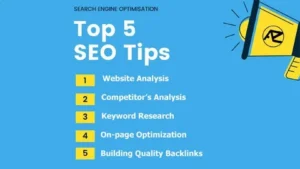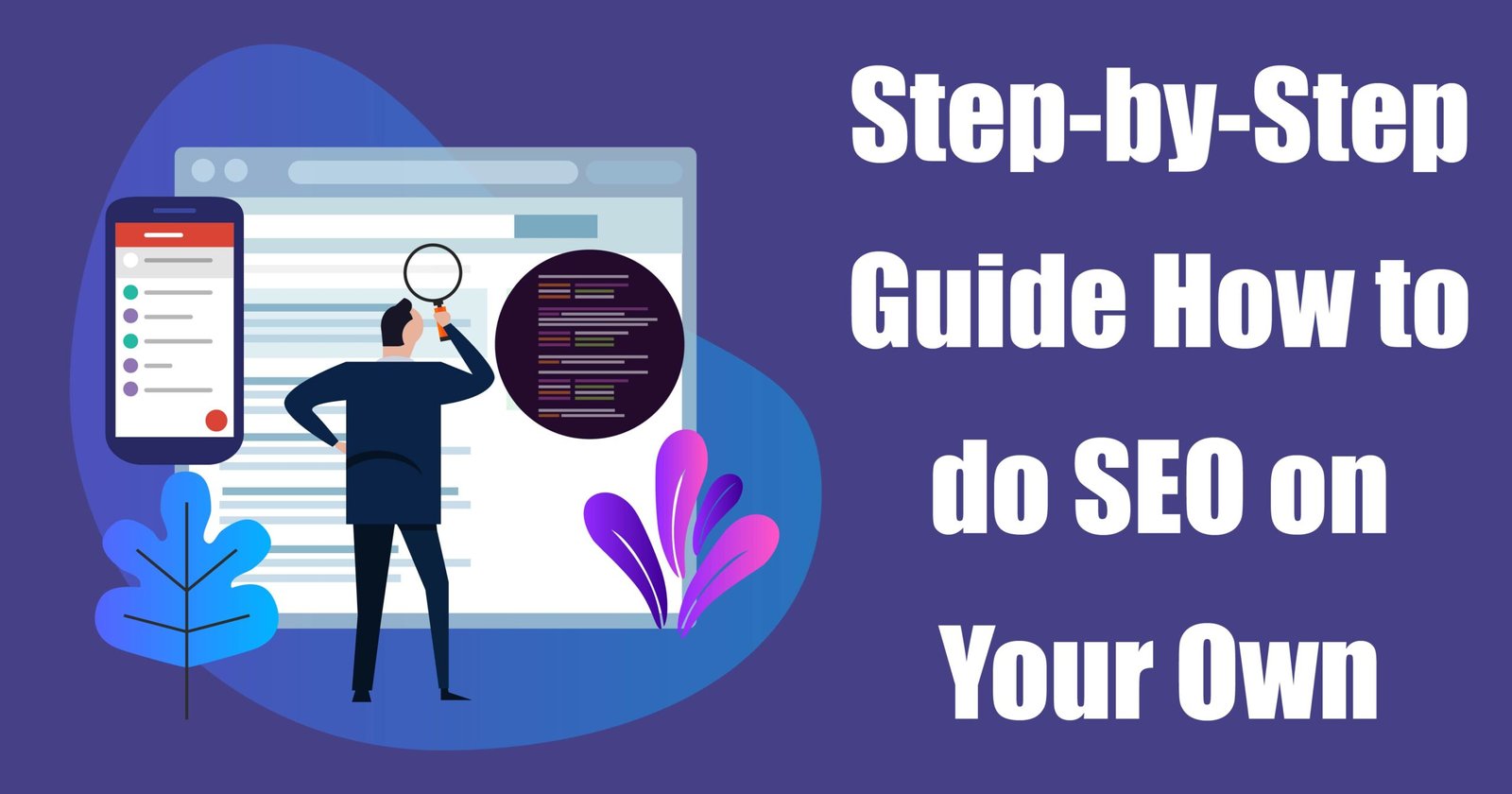step by step seo mastery guide 2025: Search Engine Optimization (SEO) in 2025 is a dynamic and multifaceted discipline that requires a strategic approach to improve website visibility, drive organic traffic, and enhance user engagement. This guide breaks down the complexities of SEO into manageable components, identifies common issues, and provides actionable solutions to help clients achieve sustainable success in search rankings. By addressing these challenges systematically, businesses can avoid missed opportunities, declining traffic, and loss of market share.
Breaking Down the Problem: Components of SEO Challenges
SEO encompasses several interconnected elements that must work together to achieve optimal results. The primary components include:
-
Keyword Research and Selection: Choosing the right keywords that align with user intent and business goals.
-
On-Page SEO: Optimizing individual web pages with proper titles, meta descriptions, content, and internal linking.
-
Technical SEO: Ensuring the website’s technical foundation supports efficient crawling, indexing, and user experience.
-
Content Strategy: Creating high-quality, relevant, and comprehensive content that satisfies user needs.
-
Link Building: Acquiring authoritative backlinks to boost domain authority and trustworthiness.
-
User Experience (UX) and Engagement: Enhancing site usability, speed, and engagement metrics to align with search engine algorithms.
-
Analytics and Monitoring: Tracking performance and adapting strategies based on data-driven insights.
Common Causes of SEO Issues
-
Poor Keyword Strategy: Targeting overly competitive or irrelevant keywords, or neglecting long-tail keywords.
-
Technical Errors: Slow page load times, broken links, improper redirects, or missing schema markup.
-
Low-Quality Content: Thin, outdated, or duplicate content that fails to address user intent.
-
Weak Backlink Profile: Lack of high-quality backlinks or reliance on spammy link-building tactics.
-
Neglecting User Experience: Poor mobile optimization, confusing navigation, or high bounce rates.
-
Failure to Adapt: Not keeping up with algorithm updates or emerging trends like AI-driven search.
Consequences of Not Addressing SEO Issues
Failing to address these issues can lead to:
-
Reduced Visibility: Lower rankings in search engine results pages (SERPs), resulting in less organic traffic.
-
Lost Revenue: Decreased traffic and conversions, impacting business growth and profitability.
-
Competitive Disadvantage: Competitors with stronger SEO strategies will dominate market share.
-
Poor User Experience: Frustrated users may abandon the site, increasing bounce rates and signaling low quality to search engines.
-
Algorithm Penalties: Practices like keyword stuffing or spammy links can lead to penalties, further harming rankings.
Step-by-Step SEO Mastery Guide for 2025

Below is a detailed, actionable roadmap to master SEO in 2025, designed to help clients resolve issues and achieve measurable results.
Step 1: Conduct a Comprehensive SEO Audit
Objective: Identify existing issues and opportunities across the website.
-
Action: Use tools like Semrush Site Audit or Google Search Console to assess technical, on-page, and off-page SEO elements.
-
Tasks:
-
Check for crawl errors, broken links, and duplicate content.
-
Verify mobile-friendliness using Google’s Mobile-Friendly Test.
-
Assess site speed with Google PageSpeed Insights or Lighthouse.
-
Review indexability via robots.txt and sitemap settings.
-
-
Tools: Semrush, Ahrefs, Screaming Frog, Google Search Console, Lighthouse.
-
Example: A local e-commerce site discovered through a Semrush audit that 20% of its product pages were not indexed due to improper robots.txt settings. Correcting this increased organic traffic by 15% within two months.
Step 2: Perform In-Depth Keyword Research
Objective: Identify high-potential keywords aligned with user intent and business goals.
-
Action: Use keyword research tools to find relevant, low-competition keywords, focusing on long-tail and semantic variations.
-
Tasks:
-
Enter broad terms related to your business into tools like Semrush Keyword Magic Tool or Google Keyword Planner.
-
Analyze competitor keywords using Semrush’s “Domain Overview” or Ahrefs’ “Competing Domains.”
-
Group keywords into topic clusters to cover related subtopics comprehensively.
-
Prioritize keywords with high search volume and low difficulty that match user intent (informational, navigational, or transactional).
-
-
Tools: Semrush, Ahrefs, Google Keyword Planner, SearchResponse.io.
-
Example: A fitness blog targeted “best running shoes” but found high competition. By focusing on long-tail keywords like “best running shoes for flat feet 2025,” they ranked on page one within three months, driving 5,000 monthly organic visits.
Step 3: Optimize On-Page SEO Elements
Objective: Enhance individual pages to improve rankings and user experience.
-
Action: Optimize title tags, meta descriptions, headers, and content for target keywords and user intent.
-
Tasks:
-
Place primary keywords near the beginning of title tags (e.g., “Best Running Shoes for 2025 | Brand Name”).
-
Write compelling meta descriptions (120–160 characters) to boost click-through rates.
-
Use H1, H2, and H3 headers to structure content and include related keywords.
-
Incorporate long-tail keywords and semantic terms naturally in content.
-
Add internal links from high-authority pages to boost weaker pages.
-
-
Tools: Yoast SEO (WordPress), Semrush On-Page SEO Checker, Surfer SEO.
-
Example: Backlinko optimized a post for “on-page SEO” by restructuring content with clear subheaders and adding internal links, resulting in a 30% increase in organic traffic.
Step 4: Strengthen Technical SEO
Objective: Ensure the website is crawlable, indexable, and user-friendly.
-
Action: Address technical issues that hinder search engine performance or user experience.
-
Tasks:
-
Implement schema markup (e.g., JSON-LD) for rich snippets using Schema.org.
-
Optimize Core Web Vitals (LCP, FID, CLS) with lazy loading, image compression (WebP format), and minified CSS/JS.
-
Fix hreflang errors for multilingual sites and use canonical tags to resolve duplicate content.
-
Ensure HTTPS security and fix www/non-www conflicts.
-
Submit an updated XML sitemap to Google Search Console.
-
-
Tools: Google Search Console, Screaming Frog, WebSite Auditor, ShortPixel.
-
Example: OWDT resolved redirect chain issues for a client, reducing crawl budget waste and improving rankings for key pages by 10 positions.
Step 5: Develop a Comprehensive Content Strategy
Objective: Create high-quality, user-focused content that establishes topical authority.
-
Action: Build topic clusters and produce in-depth content that addresses user intent.
-
Tasks:
-
Conduct a content gap analysis to identify missing topics compared to competitors.
-
Create cornerstone content (e.g., “Ultimate Guide to Home Composting”) and supporting articles (e.g., “Best Compost Bins for 2025”).
-
Use Surfer SEO’s Topics tab to ensure comprehensive coverage of subtopics.
-
Format content with short paragraphs, bullet points, and multimedia for readability.
-
Update outdated content quarterly to maintain relevance.
-
-
Tools: Surfer SEO, AnswerThePublic, Google Analytics.
-
Example: A SaaS company used Surfer SEO to create a topic cluster around “email marketing automation,” resulting in a 25% increase in organic traffic and featured snippets for key terms.
Step 6: Build High-Quality Backlinks
Objective: Increase domain authority through ethical link-building strategies.
-
Action: Focus on earning backlinks from authoritative, relevant sites.
-
Tasks:
-
Use the Skyscraper Technique: Identify top-ranking content, create a better version, and pitch it to sites linking to the original.
-
Find broken links on relevant sites using Ahrefs and offer your content as a replacement.
-
Contribute guest posts or “guestographics” to reputable blogs in your niche.
-
Leverage relationships (e.g., clients, partners) for low-effort backlinks.
-
-
Tools: Ahrefs, Semrush, Pitchbox.
-
Example: Brian Dean used the Skyscraper Technique to earn backlinks for his “Google Search Console Guide,” boosting its ranking to page one for competitive keywords.
Step 7: Monitor and Optimize Performance
Objective: Track SEO performance and adapt strategies based on data.
-
Action: Use analytics tools to measure traffic, rankings, and user engagement, and refine strategies accordingly.
-
Tasks:
-
Connect Google Analytics with Google Search Console to track organic traffic and keyword performance.
-
Monitor Core Web Vitals and user engagement metrics (e.g., dwell time, bounce rate).
-
Use Semrush’s Position Tracking to monitor keyword rankings weekly.
-
Schedule quarterly audits to identify new issues or opportunities.
-
-
Tools: Google Analytics, Google Search Console, Semrush, Bing Webmaster Tools.
-
Example: A blog integrated Google Analytics with Search Console and identified underperforming pages, optimizing them to increase clicks by 20% in 30 days.
Real-World Case Study: E-Commerce Turnaround
A mid-sized e-commerce retailer struggled with declining organic traffic due to outdated content and technical errors. By following this guide:
-
Audit: A Semrush audit revealed 50+ broken links and duplicate product pages.
-
Keyword Research: They targeted long-tail keywords like “sustainable women’s clothing 2025,” reducing competition.
-
On-Page SEO: Optimized product page titles and meta descriptions, increasing click-through rates by 10%.
-
Technical SEO: Fixed broken links, implemented schema markup, and improved site speed, boosting mobile rankings.
-
Content Strategy: Created a topic cluster around “sustainable fashion,” earning featured snippets.
-
Link Building: Secured backlinks from eco-friendly blogs, increasing domain authority by 15 points.
-
Monitoring: Used Google Analytics to track a 35% traffic increase over six months.
This comprehensive approach turned their SEO performance around, resulting in a 50% revenue increase from organic channels.
Preventing Future SEO Issues
To maintain long-term SEO success, implement these preventive strategies:
-
Stay Updated: Follow Google Search Central Blog and industry leaders like Backlinko for algorithm updates.
-
Regular Audits: Schedule quarterly SEO audits to catch issues early.
-
Content Refresh: Update high-traffic pages every 6–12 months to maintain relevance.
-
Ethical Practices: Avoid black-hat tactics like keyword stuffing or buying low-quality links.
-
Invest in Tools: Use premium tools like Semrush or Ahrefs for ongoing competitor analysis and keyword tracking.
-
Focus on E-E-A-T: Demonstrate Experience, Expertise, Authority, and Trust by citing credible sources and showcasing author credentials.
Next Steps and Call to Action
To achieve SEO mastery in 2025, start implementing this guide immediately:
-
Run an SEO Audit: Use Semrush or Google Search Console to identify issues today.
-
Develop a Keyword Strategy: Spend a week researching and clustering keywords.
-
Optimize Key Pages: Prioritize high-traffic pages for on-page and technical improvements.
-
Create a Content Plan: Outline a topic cluster for your core business niche.
-
Start Link Building: Reach out to one potential backlink source this week.
-
Set Up Monitoring: Integrate analytics tools and schedule weekly performance reviews.
Don’t let poor SEO hold your business back. Take action now to boost your rankings, drive traffic, and grow revenue. For personalized support, contact an SEO specialist or explore premium tools like Semrush (https://www.semrush.com) or Ahrefs (https://ahrefs.com). Start today and dominate search results in 2025!
